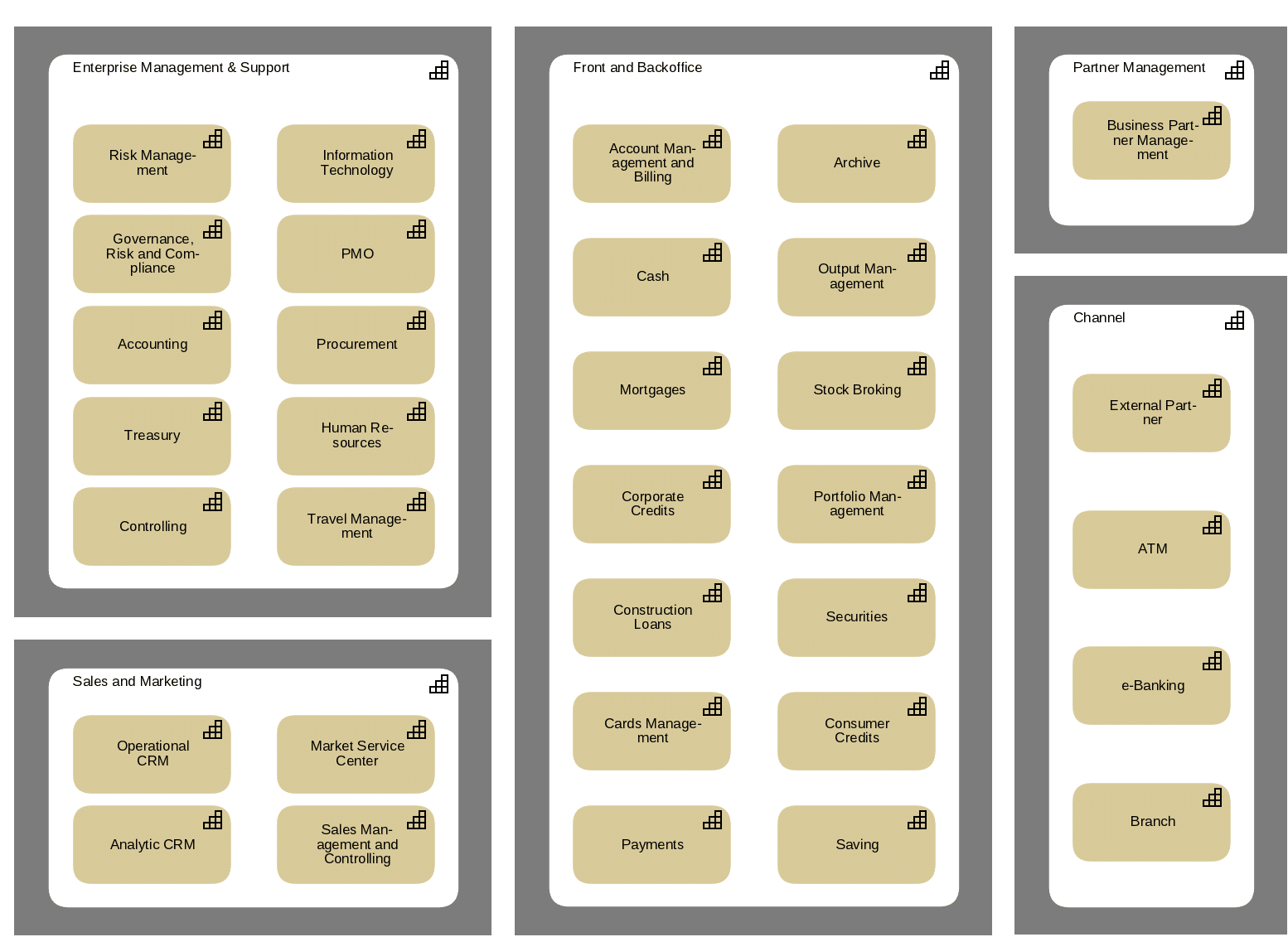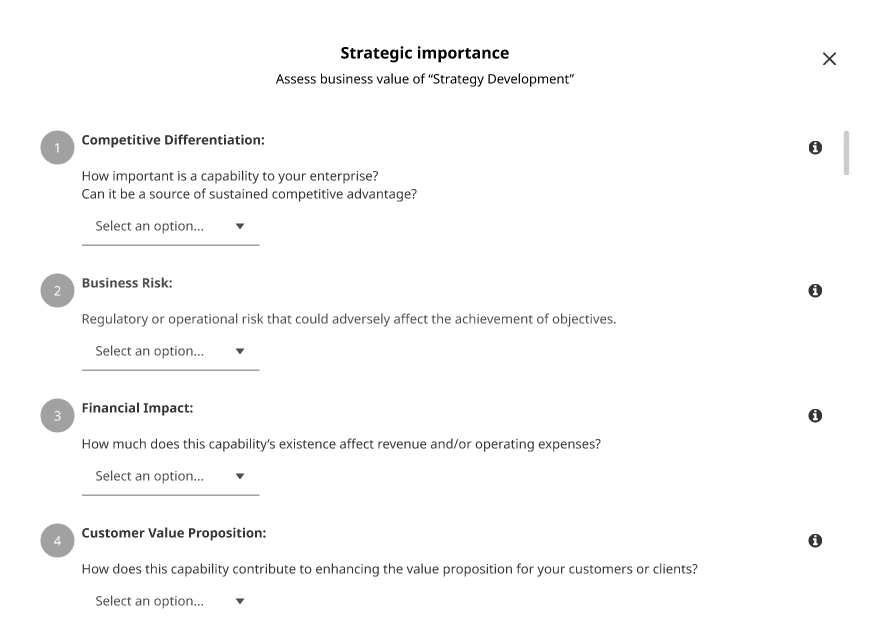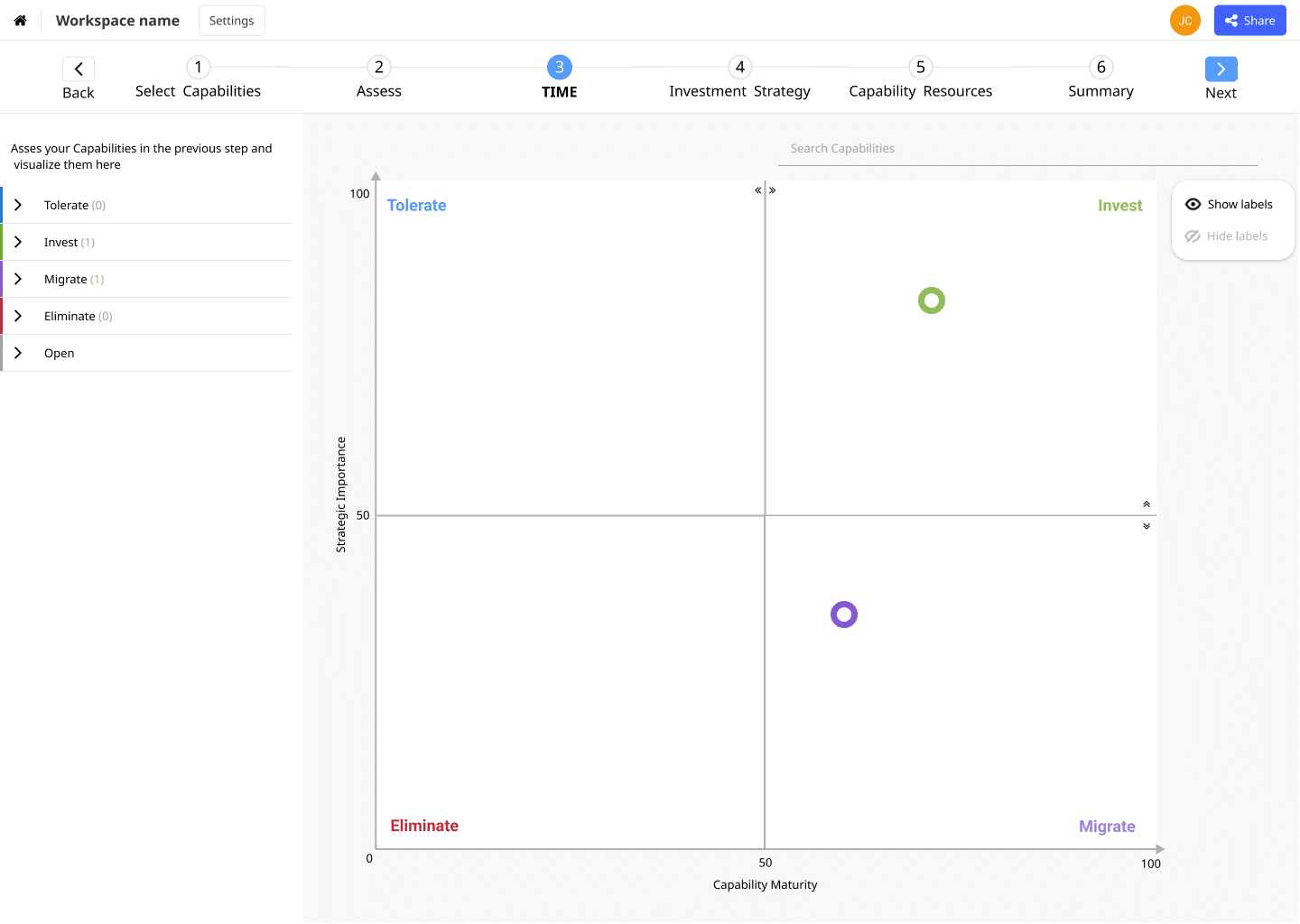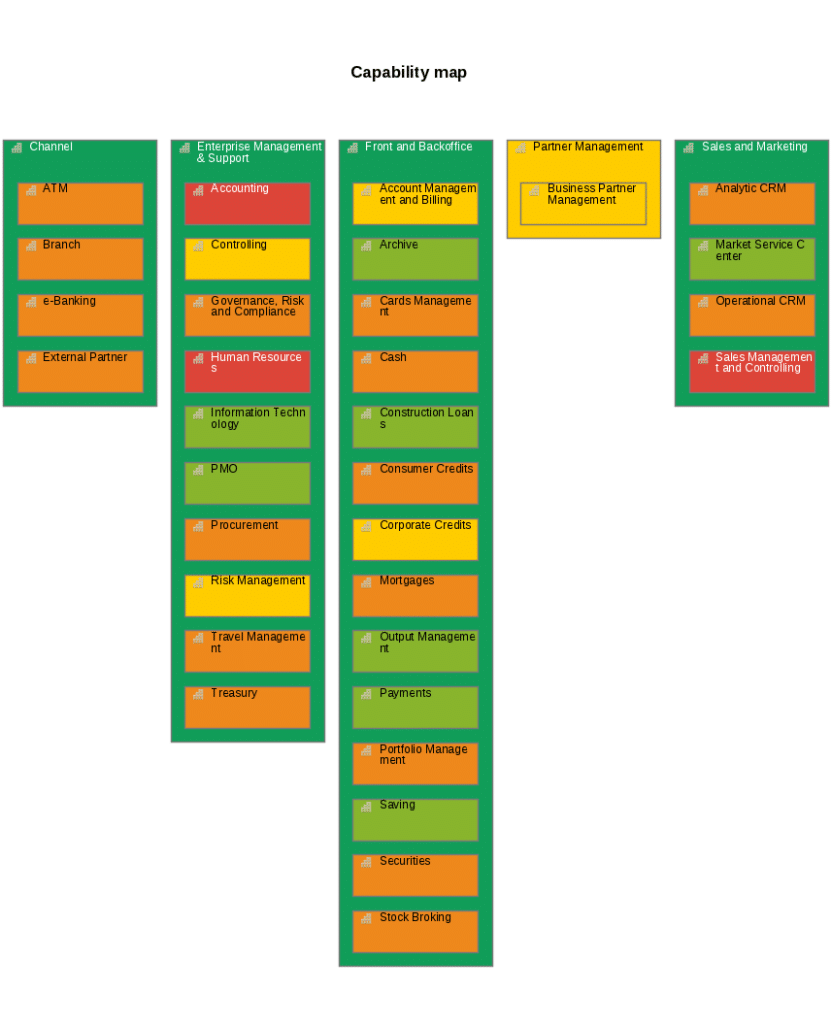Found this helpful? Share it with peers.
Introduction
In today’s rapidly evolving business landscape, where adaptability and competitiveness are paramount, understanding and leveraging your business capabilities has never been more important. Whether you’re running an established business or launching a start-up, the success of your business transformation initiatives depends on your ability to assess and optimize your core capabilities. Business capabilities are the lifeblood of any business and encompass everything from the skills and expertise of your team to the efficiency of your processes and utilization of your resources
In our blog post, we’ll help you navigate this difficult terrain. Join us as we explore the strategies and tools you need to analyse your business capabilities and ensure they align seamlessly with your transformation initiatives.
What are business capabilities?
We have already discussed what capabilities are in our blog about Business Capability Map. If you can’t remember, here’s a quick reminder:
Imagine a simple street map. At its core, it serves as a graphic representation of tangible streets, intersections, and nearby landmarks. This zoomed-out representation helps us see the big picture, identify key points, and develop itineraries.
Now let’s apply this concept to your organization. Typically, we would conceptualize the mapping or visualization of an organization in terms of its basic elements, its capabilities, such as:
- People
- Processes
- Resources
To present your capabilities to your colleagues, we recommend using a Capability Map. Why?
With capability maps we introduce an alternative approach. As the name implies, capability maps show all important capabilities of your organization, i.e. it maps everything your organization needs or wants to be able to do. Each capability is a building block describing a unique combination of processes, people – respectively business roles and organizational units – and resources (physical assets) that enable your organization to do what it does.
Furthermore, visual maps are effective tools for communication, especially when dealing with diverse audiences. They transcend language barriers and facilitate discussions by providing a common reference point for everyone involved. People tend to remember visual information better than plain text. A well-designed map can leave a lasting impression and aid in better retention of critical details.
Example of a Capability Map in the EA Suite ADOIT
To sum up, a Capability Map is a visual representation of the organization’s capability blocks, their interrelationships, and the degree of required changes. When we talk about possible changes, we refer to the necessity of creating new capabilities or modifying existing ones.
But now let’s get to the real topic of this blog: How you can evaluate your capabilities.
Hint: Also check out the Milky Way Maps. A cool approach to modelling your capabilities.
How to assess your business capabilities?
Assess the strategic importance and maturity of your business capabilities
The first thing you need to do is, figure out which capabilities are important strategy-wise. Those are the ones you should focus on. Don’t forget, as always, you will have to deal with resource limitations, and you must decide what is crucial.
You might be interested in:
- Strategic Importance: These capabilities are the “secret sauce” of your organization. They are the unique strengths and differentiators that set your organization apart from competitors and contribute significantly to your success in the market. Identifying and leveraging these capabilities can be crucial for positioning your organization as a preferred choice among customers.
- Capability Maturity: The extent to which a capability is well-developed, optimized, and aligned with best practices.
Right now, you are probably wondering how we can determine what is strategically important or how to assess capability maturity. Fortunately, there are proven techniques for doing so.
For example, using the VRIO model to identify the strategic importance of your capabilities and uncover the ones that give your organization a long-term competitive advantage. VRIO is a four-question framework acronym that emphasizes value, rarity, imitability, and organization as 4 key criteria for evaluating capabilities. To assess your capabilities based on these criteria, you can employ a decision tree in the form of a survey. Answer the most important questions about each of your capabilities to get their score.
Examples of a survey-based assessment of the strategic importance in ADOIT
The same applies to maturity. Using surveys helps you to objectify your assessments.
To analyse the maturity of your capabilities, you use a maturity model. This can, for example, be based on the Capability Maturity Model Integration (CMMI) of ISACA, a framework of reference models and best practices for different industries and application areas. CMMI comes with five maturity levels based on the typical criteria’s process efficiency, IT support level and staffing:
- Level 1 – Initial: At this level, business capabilities are characterized by ad hoc and chaotic processes and may struggle to meet quality, cost as well as people and resources.
- Level 2 – Managed: Business capabilities at this level have established some basic process management practices and there is a greater level of control over projects and work products. However, improvement is needed.
- Level 3 – Defined: At this level, business capabilities have well-documented and standardized processes that are tailored to specific projects and domains. There is a continuous improvement and the business capabilities are better equipped to meet quality, cost as well as people and resources with greater consistency.
- Level 4 – Quantitatively Managed: Business capabilities at this level use quantitative data and statistical techniques to manage and control people, processes and resources. The organization can predict and control outcomes with a high degree of confidence, leading to improved efficiency and reduced risks.
- Level 5 – Optimizing: At the highest level, business capabilities continually optimize their people, processes and resources based on quantitative data and feedback. There is a culture of innovation and continuous improvement. The organization is proactive in identifying and addressing potential issues, resulting in consistently high-quality outcomes and adaptability to changing circumstances.
But what’s next?
Define an investment strategy for each of your business capabilities
Once you have evaluated all your capabilities, you can present the results, for example, using the Gartner Time Model.
Example of a TIME model in the EA suite ADOIT
Position your capabilities based on the strategic importance and capability maturity and identify any of the following strategies for them:
- Tolerate: Business capabilities that fall under the “Tolerate” category are those that are necessary for basic operations but do not provide a significant competitive advantage or strategic value. These capabilities are maintained at a minimum level to support essential functions but are not a priority for further investment or development.
- Invest: Capabilities in the “Invest” category are strategically important and offer a competitive advantage or potential for growth. Organizations should prioritize these capabilities for investment to further enhance their impact and value.
- Migrate: This category groups the capabilities that are of high importance, but are otherwise somehow inadequate. Therefore, it is highly recommended to find the alternatives.
- Eliminate: Capabilities in the “Eliminate” category are no longer relevant, necessary, or valuable to the organization. These capabilities should be phased out or replaced to free up resources and focus on more critical areas.
Present the results of your capability assessment
In your final step, you can now present your Capability Map as a heatmap. At a glance, it will be evident where you should invest (orange and red) and where you should be more conservative with your resources (yellow and green):
Example of a Capability Map as a heatmap in ADOIT
This heatmap is the ideal starting point for your further strategic planning, and especially for deriving strategic requirements that make up your strategic roadmap. Your stakeholders will love you for it.
Summary
So, to sum up, just as you need a street map to get around the city, you need a capability map to visualize your organization’s main abilities or the abilities that it aims to possess. However, without a proper assessment of each of your capabilities, you can’t optimally determine your next steps. Therefore, after grouping them by strategic importance and their maturity level, you should evaluate each of your main capabilities and determine which way to go. You might realize some of them are not as important anymore and therefore need to eliminate them. On the other hand, you might conclude that some of them need investing or updating, or similar. Only then will you be ready to plan your requirements and make successful business transformations.









